The idea of endangered species in California or elsewhere is not an old one.
In fact, during the Age of Enlightenment when people were inventing the printing press, marveling at astronomy, and increasing trade, they also thought that God would take care of the animals and would never let any of his creatures die unnecessarily.
As the scriptures had pointed out, so the logic went, the Creator had placed the animals on earth to serve mankind. A couple of centuries later, Charles Darwin made it clear that animal species did and could in fact expire and go completely extinct, as he documented so carefully in his writings.
As a result, today’s definition of “endangered” is literally those species, plant and animal, whose population is so small, they very well could be wiped out of existence in the modern day. For California that ranges from mammals to birds to plants in a biodiverse environment that ranges from deep, rich forests in the north to the arid desert of the Southern California valleys.
And it’s through awareness and protection, as well as conservation, that these species might still have a fighting chance to last versus becoming another statistic in the history books.
A Lot of Diversity in One Territory
California as a natural environment is big. It makes up two-thirds of the Pacific coastline of the U.S., and the state has more changes in its territory than most states put together.
That said, development has taken a toll, and good number of species are on the brink in the state, either pushed to the edge by growing expansion of population interfaces or simply running out of natural territory that is critical for their survival.
Pollution is also charging a heavy price as chemicals, trash and ground-poisoning make once-expansive areas that given species thrived in inhabitable.
In short, protecting California’s endangered species is more than just making sure not to kill any more of their numbers. It’s also about protecting the landscape and environment that these species depend on to survive, which is a far more complicated affair.
See Related: Spectacled Bear
Notable Entries in the State’s Endangered List
Below is a list of what are some endangered species in California and the most notable as a state and territory. They include both mundane-looking animals and plants as well as some of the most iconic species that call California home.
Kings Gold
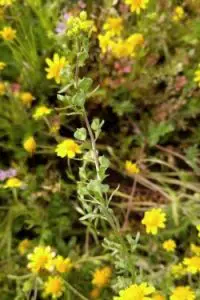
Scientifically known as Tropidocarpum californicum, this plant could be easily mistaken for a weed. However, it is a naturally-growing plant in California that has been in the state for centuries well before human beings showed up and started landscaping everything.
In terms of relations, the Kings Gold can be grouped with cabbage plants, and flowers with a small yellow bulb. The plant sits on the endangered species in California list because it had a number of strikes going against it from the start with a low population, a requirement for a specific soil mix, and a scraggly look to it.
In fact, the rarer aspect of the plant is finding anyone that actually likes it as a species to begin with.
The greatest amount of Kings Gold grew near Tulare Lake, at least in terms of documented presence, much of that due to the fact that the soil in the particular area had a high level of alkaline in it, a key ingredient for the given plant. The last of the Tulare specimens died out sometime in the 1940s and haven’t been seen since.
Other areas and locations were rearranged by farming, irrigation or wiped out by localized climate change due to the variations created by human presence and development. Many specimens needed proximity to rivers, and these were swamped or flooded over as dams were built.
As of today, the only known location were the Kings Gold still lives and blooms is in one location off of Interstate 5 near Wasco. At that time when found, experts were able to inventory approximately 50 different plants of the species in 1999. Revisits to the same location have checked on the population, but it has remained the same; no new plants have been seeded or grown.
As more and more towns keep growing along I-5, and the corridor increases with traffic, eventually this singular patch could be affected as well.
See Related: Pygmy Three-Toed Sloth
The Delta Smelt
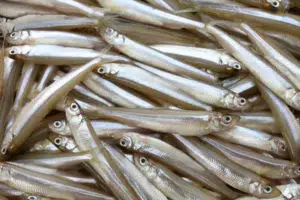
A small fish, tinier than an anchovy, lives in the Sacramento Delta and has called the inland waterways home for years. However, human presence triggers a considerable amount of biological change, including adding new water plant life, all of which started killing off the Delta Smelt in large numbers.
For years it was one of the most famous creatures on the endangered species in California list. Part of the problem working against the Smelt is that it sits in the very water ways the state needed for irrigation of farmland as well as drinking water re-distributed to the southern areas. The Smelt have a bad habit of getting sucked into the various culverts and diversions, which in turn kill them off considerably.
Naturally, the Delta Smelt are a classic species that found a niche in the natural difference of California and were fine until people showed up. The waters of California range from the snowmelt to the watersheds that capture the runoff to the Delta and then eventually the salty ocean in the Bay Area.
The Smelt are a species of fish that found a way to thrive in the very thin barrier between the snowmelt waters and the ocean tidal waters full of salt. This diluted mix only exists in certain parts of the Delta, and it can be considerably changed as freshwater is diverted away upstream.
Once development started pulling freshwater out of the rivers prior to this mixing barrier, saltwater was able to move further and further up the Delta. The result essentially destroyed the habitat where the Smelt live, forcing them further up and closer to the diversions.
Suddenly, the remaining Smelt were either being eaten by freshwater animals, sucked into the diversion pumps, or being starved by newly-invading saltwater sea life like clams eating up their food source.
Many experts believe the Smelt are pretty much goners, but they seem to keep hanging on. A few specimens keep popping up in fishnets here and there, but they are nothing like the numbers that used to be pulled out of the Bay-Delta mix decades ago.
Again, however, the extinction won’t be mourned by some; the Smelt have been the source of a number of obstacles for development and would be better off gone in the minds of many.
See Related: Hawksbill Sea Turtle
The Amargosa Vole
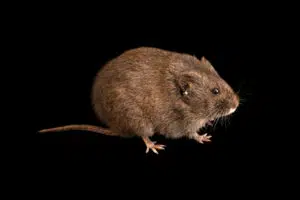
With what looks like a mouse face and an elongated nose, the Microtus californicus scirpensis regularly digs its way around seeking food and sustenance out of the eyes of predators and humans whenever possible. This particular species naturally handles the desert and arid climate quite well, as long as it stays in that environment the whole time.
When a number of biologists tried to re-plant this vole back in its area from captive specimens in 2015, they stressed out so much, the animals stopped drinking water and died in their cages before arriving. It’s indicative of how sensitive the species is to changes in its surroundings.
Naturally, the Amargosa vole could be found in a marsh that fostered and grew the plant known as a three-square bulrush. This plant is indigenous to the Death Valley region, and it grows very well when the ecosystem is in balance.
Unfortunately, farming reconstituted the ground water. That coupled with a drought basically spelled a death-knell for the plant, and the local marshland dried up. The vole started dying off just as much because its primary food source was disappearing. The species was saved in captivity by a combination of university and government experts who figured out how to sustain them.
The grand plan is to reintroduce the species back once the bulrush die-off conundrum can be solved. In the meantime, it’s a population in captivity at UC Davis that represents the remaining numbers of the Amargosa vole.
By 2015 a new colony was successfully started again outside of the lab, but the survival in the wild has been stop and go with extremely delicate protection. No surprise, the vole has a very high position on the endangered species in California category.
See Related: West African Manatee
The Tricolored Blackbird
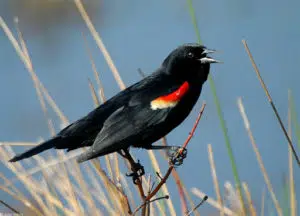
Some long-standing Californians might remember these birds having been a bit more plentiful in the 1970s, but the Tricolored Blackbird is also on the endangered list as of 2020.
The range, unlike other birds, does not leave California at all. Instead, this species bunch together during the spring for nesting, and then they spread out the rest of the year, usually towards grain fields. The combination of grain harvest time and the birds oftentimes ends with a lot of birds being killed by the harvesting equipment.
This is a bird species that used to have an immense number of population in years before and has dropped some 44 percent in recent years. Farming, again, has been the primary mortality source of most of the birds, which doesn’t seem to be solvable anytime soon.
See Related: Asian Lion
The Buena Vista Lake Ornate Shrew
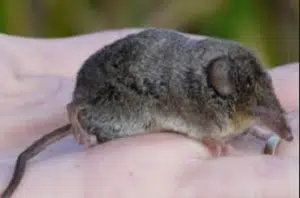
Another of the furry, mundane-looking mammals unique to the state, the Buena Vista Lake Ornate Shrew is a particularly hard creature to find now. Native to the Tulare Basin area, this shrew and its population has shrunk down to barely 30 left since 1990. Again, another victim of development, the shrew was quite happy in the runoff with the Tulare Basin, the same waters that fed the Tulare Lake repository.
However, changes, development, and drought dried up the basin, and much of the wetland that the shrew called home disappeared. The current population and territory make up 5 percent of what used to exist. Scientists aren’t really sure if any of the shrew still survive today has it has been almost impossible to find signs of them, but it is unlikely they will last long as water continues to be diverted to farm, the main source of their wetlands even existing.
See Related: Great Hammerhead Shark
The Desert Slender Salamander
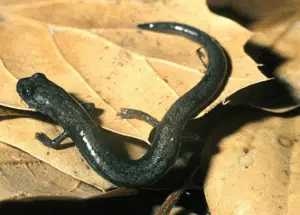
Among the endangered species in Southern California no one is quite sure whether the Desert Slender Salamander still exists, mainly because there hasn’t been a documented sighting of it for at least two decades. This particular salamander was known to populate the Santa Rita Mountains located near Riverside.
Unfortunately, the region has continued to keep drying out, and the recent extreme drought in the last ten years probably wiped out anything that was left of the species.
The Desert Slender Salamander was first found in 1960 near Palm Desert. Found in two canyons in the area, the species survives on trapped water working its way through rocks, and the salamander relies on the moisture to keep it moist. If the animal dries out, it can no longer breathe through its skin and dies. The last sighting of the creature was documented in 1996.
It’s possible a few might still exist in the area where they were first found, but biologists have stopped actively looking for it, officially signing it off as very likely extinct.
See Related: Great White Shark
The Lange Metalmark Butterfly
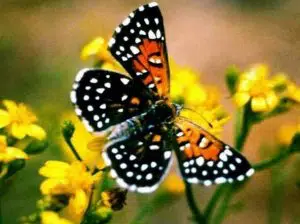
No one at first blush would ever expect a location like Antioch, California to be home to an endangered species. The East Bay city has been a blue color town known for a gritty existence, sprawling, unplanned development and strip malls.
That said, somehow biology has found a way to keep surviving in the area, and that’s the case with the Lange Metalmark Butterfly. Orange and black, and often confused with Monarch butterflies, the Lange version is unique in that it can only survive on one plant, a locally species known as the Antioch Dunes buckwheat.
The Antioch Dunes sits right on the south shore of the nearby San Joaquin River, but the area has been ravaged as supply for brickmakers going as far back as 1906. The entire area spans about 55 acres, but the dunes are disappearing due to invading plants. This in turn wipes out the larva food the butterflies eat, and their population has been dropping as well. 45 adults were counted in 2006.
There are plenty of other contenders on the California endangered list, including the Sacramento River Chinook Salmon, the famous California Condor, and most notably, the California Gray Wolf, which just showed up with its first pair starting in 2014.
All of these species and many more, however, share the same issue: human development and encroachment continue to keep pushing them into oblivion. Until humans can find a way to grow without continue to keep damaging the environment, the state will continue to see casualties added to the list of endangered species in California, increasing even faster with modern activity.
Related Articles
